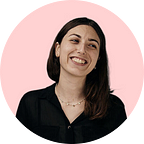IDC’s (now Reichman University) Entrepreneurship Club is the largest club in the university and of its kind in the world. The club runs 13 different entrepreneurship programs, crafted for students by students. We bring in industry leaders to give us a peak into their journey, organize workshops and connect between passionate students from all faculties.
After participating in the club for a year and enjoying all it had to offer, I wanted to assist in fulfilling the club’s potential. The community manager position caught my eye and without fully understanding the role yet, I decided to apply, and the rest is history.
Today, after over a year as a community manager, this is what I learned and what I wish I knew when I took my first steps in the shoes of a a newfound community developer and manager.
Building a meaningful community
Step 1: What didn’t work already?
When I began there wasn’t a thriving community yet, however, even after a few attempts to do so. I reached out to former community managers to understand why , one of which was:
“We tried to kick it off on a community platform to make it exclusive — it was hard to convert prospects into members and there was barely any retention from those who did”
Conclusion: Don’t build a community that doesn’t have much value yet on a platform that no one would reach. It’d be better to launch it in a platform that potential members use on a daily basis (e.g. Facebook). Once it’s thriving a different platform could have its benefits.
The 2 platforms that did catch my eye were Circle and Mighty Networks. I’m glad I started off with Facebook, especially since they’re investing a lot into community features nowadays, which I believe will be be more dominant in Facebook’s future roadmap. You can find useful resources here.
Step 2: What would potential members want to find in our community?
Treat a community like any other product, and its members as clients. I conducted a lot of research before I began to get my hands dirty.
What are the different personas in my community?
- Student club alumni
- Students that are currently taking part in one of our programs
- IDC graduates club alumni
Why would members want to join? Why would they return?
To answer that question I conducted an elaborate survey with a different workflow for each personas, using Typeform. The top requests were:
- Find partners for a venture
- Consult with each other
- Share valuable information (articles, videos…),
- Attend workshops and events that are exclusive to community members
- Get access to mentors from the industry
- Receive special benefits
With limited time and resources in mind, I had to prioritise what to develop.
Step 3: USP — What is my community’s USP (Unique Selling Point)
What would club members & alumni find in my community that would differentiate us from other similar communities?
There are a lot of high quality entrepreneurship and innovation communities out there. What would they find in our community that they won’t find in more established ones? Finding my USP is the next step.
A lot of different requests came up in the survey results. I tried to find what our community could offer that members wouldn’t be able to find in other more developed ones.
- Help finding a job / internship wasn’t really related to entrepreneurship and there were enough platforms in the university and outside to assist in that aspect.
- Meeting up for a beer / hackathons / talks weren’t really possible at the time due to Covid-19, and online talks were already flooding the internet since distance wasn’t really an issue anymore.
I decided to concentrate on the online community, a consultants & mentors database, as well as special benefits for community members.
Moreover, I was highly motivated to promote the community as a platform to bring ideas to life, find partners and meet fellow community members. I came across Side Project’s Club, which was founded by Snir Sharristh and Roy Munin about 3 years ago in Jerusalem, and since then expanded to Tel Aviv branch. I thought that the weekly Tuesday meetings were exactly the platform that would push students to innovate. Unfortunately it wasn’t as successful online as it was offline (#covidsucks), and hopefully as we return to a normal reality so will the frontal meetings.
In the second part I elaborate on the a few of the challenges I faced and the solutions I came up with :)
